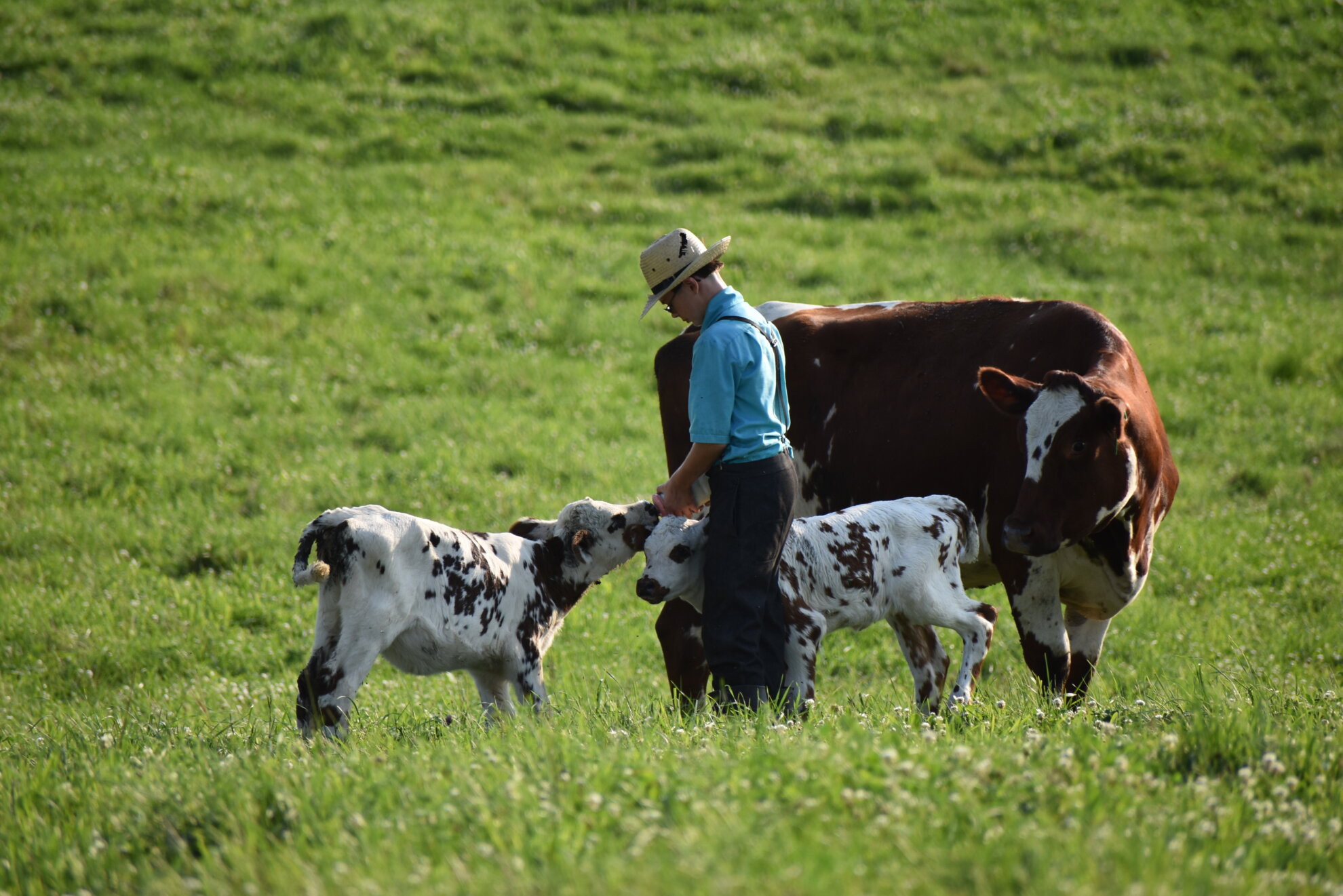
For eighteen years, Phil has been the backbone of our farm relationships at Kalona SuperNatural. As our Supply Chain Director, he’s the vital connection between our company and the small family farms that produce our organic dairy products. Today, we’re sitting down with Phil to discuss a growing trend he’s observed over his nearly two decades with us: the rise of second-generation organic dairy farmers.
Small Family Farms
“It’s a fantastic thing to see a farm family actually be able to pay their bills and feel like they’re doing the right thing and want to continue,” Phil shares enthusiastically as we chat about the evolution he’s witnessed over his career. “And this is the most important thing—the young children see the opportunity and they want to do it!”
Phil explains that when visiting farms, he makes it a point to engage with everyone, since he sees a lot of second-generation farmers. “I always look at that when I go on a farm. I’ll talk to not just the dad and mom, talk to the kids. Because you want those kids to continue this way of dairy farming.”
What makes Phil most proud after his long tenure with Kalona SuperNatural? “In my 18 years, I am now talking and dealing with the second generation,” he says with evident satisfaction. “That’s pretty cool. That’s very cool to see second-generation farmers thriving.”
A New Generation
For Phil, seeing the younger generation step into their parents’ boots represents the sustainability of not just the farms, but of the values that Kalona SuperNatural stands for. These second-generation farmers grew up watching their parents pioneer organic, grass-fed dairy production when it wasn’t the mainstream choice.
“When you see these young farmers who’ve grown up with regenerative agriculture as their normal, they bring both respect for tradition and fresh ideas,” Phil explains. “They understand deeply why their parents chose this path—the benefits for the animals, the soil, and the quality of the milk.”
What makes these transitions successful, according to Phil, is the balance of wisdom and innovation. The parents contribute decades of hands-on experience and intuitive knowledge of their land and animals. The children often bring new perspectives on business management, sustainability metrics, and connecting with today’s conscious consumers who care about where their food comes from. These second-generation farmers are essential to this success.
Weathering Challenges Together
The continuation of small family dairy farming isn’t without obstacles. Today’s young farmers face different challenges than their parents did—from rising land prices to climate unpredictability to evolving market demands.
But at Kalona SuperNatural, we’ve created a community where these family farms support each other. Phil sees this network as essential to their collective success. The families share knowledge, resources, and solutions that help everyone thrive while maintaining their commitment to organic, grass-fed dairy production and regenerative farming practices.
“The community aspect is what makes our farmers resilient,” Phil notes. “They’re not just individual businesses—they’re part of something larger, preserving a way of life and a approach to agriculture that honors both tradition and innovation.”
“Every time a farm passes successfully to the next generation, we’re preserving not just dairy farming but a whole approach to agriculture that respects the land, the animals, and the communities that depend on them,” he explains. “That’s the real mission of Kalona SuperNatural—supporting a food system where farmers can thrive while producing the highest quality, Almost Raw dairy products from pasture-raised, grass-fed cows.”
This post is part of our ongoing “Milk Chats” series where we introduce you to the people behind Kalona SuperNatural and explore topics related to organic, grass-fed dairy and regenerative agriculture. Follow along to learn more about how your food choices impact health, community, and the environment.
